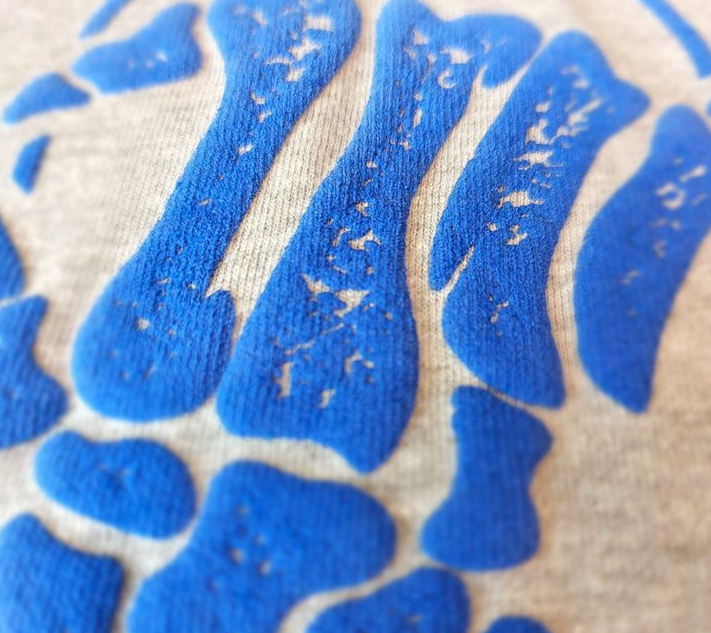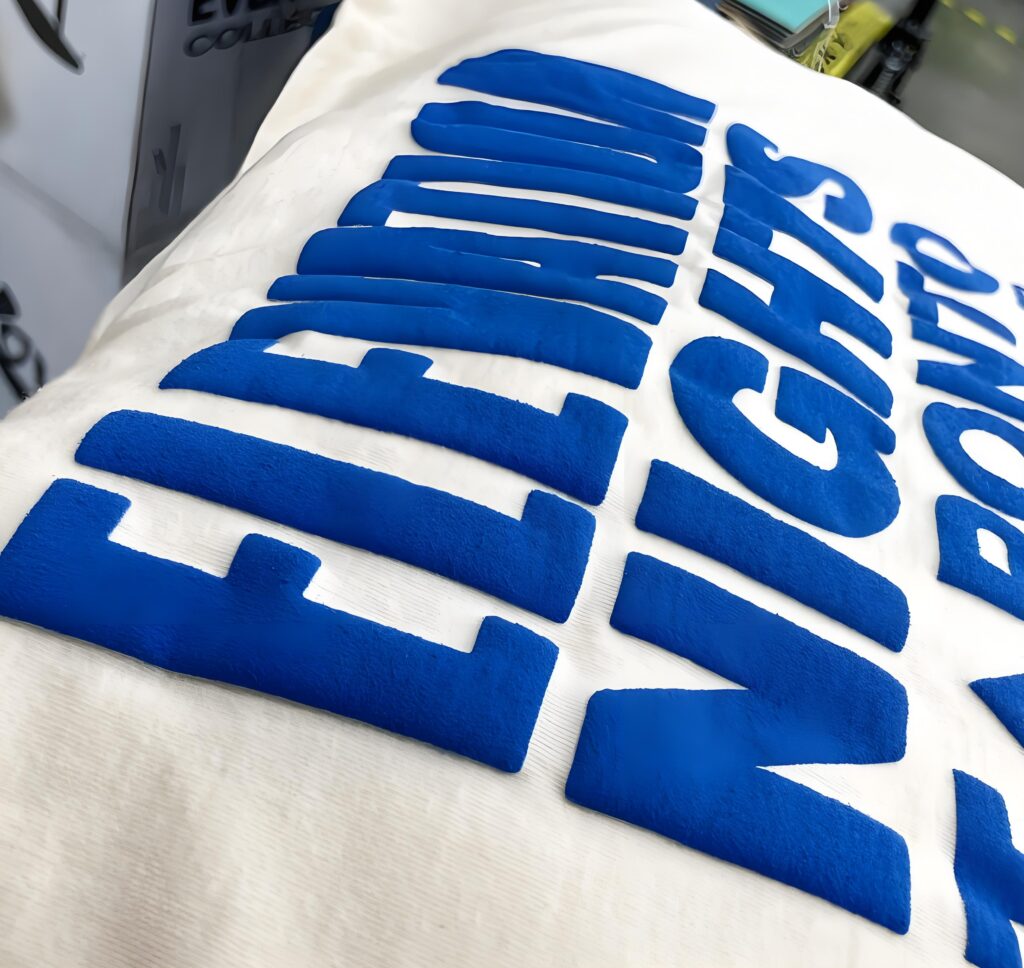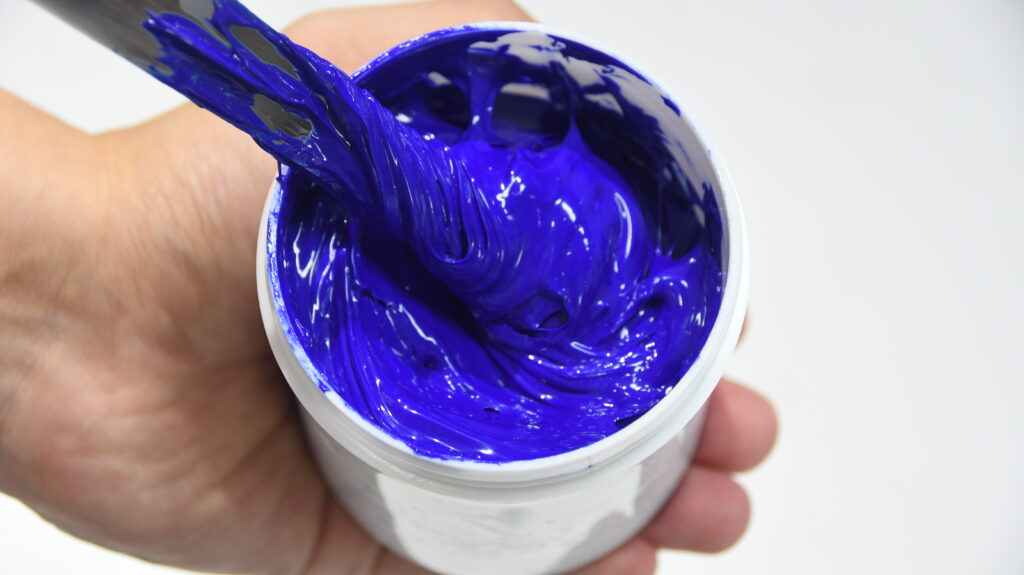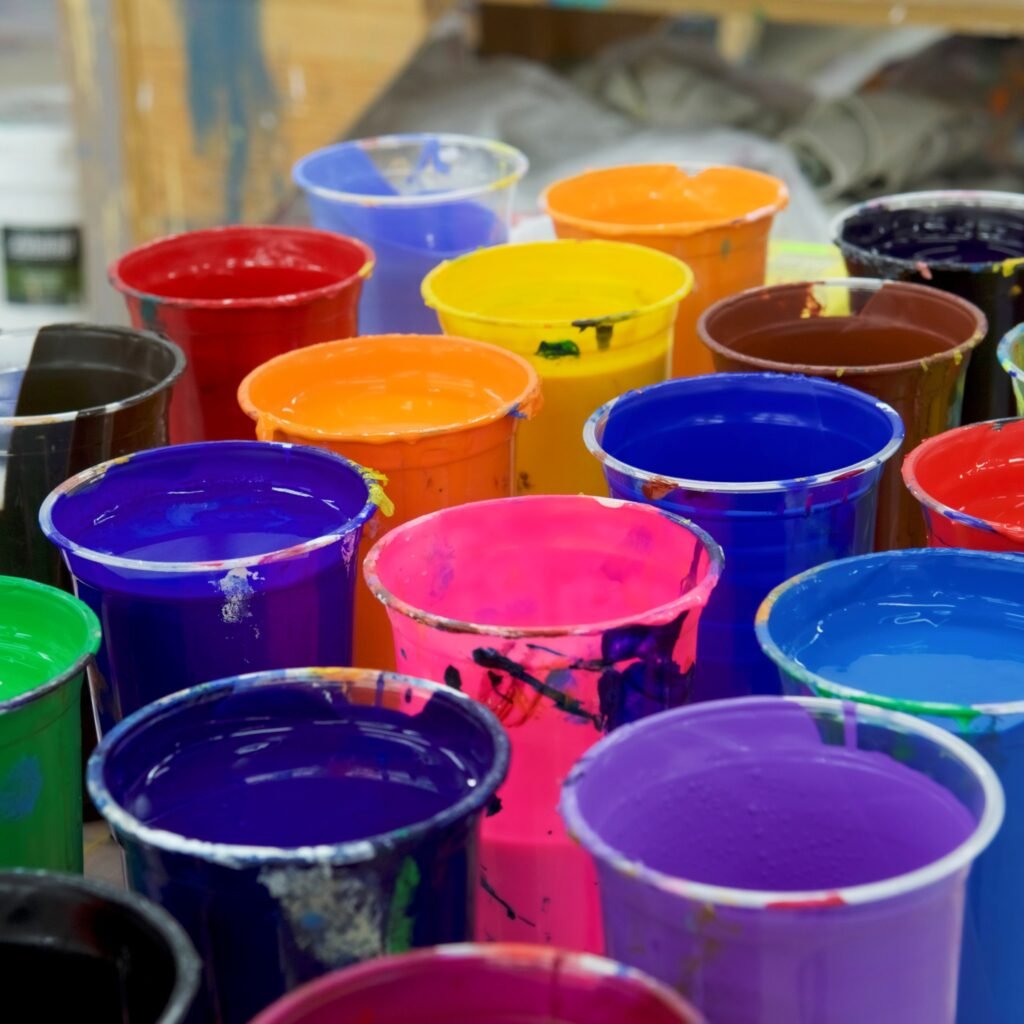Key Takeaways: What Every Screen Printer Should Remember About Blue Plastisol Ink
- Mixing and matching your blue plastisol ink gives you full control over print color and opacity—especially with a proper mixing system.
- Choose the right ink for your fabric: cotton, polyester, and blends all benefit from specialty inks like low bleed or series plastisol.
- Proper cure temperature and dwell time are vital for wash-durable, crack-free prints—always test with a wash test before large runs.
- Handle ink safely: Review safety data, use gloves, and ventilate your space, especially with large buckets.
- Store your ink in sealed containers away from heat and sunlight for maximum shelf life and print quality.
- Monitor mesh count, underbase, and ink deposit for best results on dark or light garments.
- Tackle bleed and dye migration with low cure or low bleed inks and robust underbases.
- What is the best method for handling safety data of plastic sol ink?
- Consistency in your print process—from mixing to curing—boosts production run efficiency, vibrant color, and customer satisfaction.
- Revisit safety data and manufacturer specs for every ink, especially when changing series plastisol or printing on new substrates.
By approaching every print as an opportunity to master your craft and learn something new about your blue plastisol ink, you’ll keep clients happy—and your screens full—no matter what print challenge comes your way!
Dive Deep Into நீல பிளாஸ்டிசால் மை: Mastering the Art of Mixing, Print Quality, Low Cure, & More
Craving crisp, colourful prints that pop off the blouse? Whether you’re a seasoned display screen printer or just getting started, knowledge blue plastisol ink is fundamental for leveling up your craft. This post will get to the bottom of each nuance—from blending and matching Pantone® sunglasses, to curing at the right temperature, to warding off headaches like dye migration and bleed. Read on for practical suggestions, pro strategies, and clean factors with a view to empower you to wield ink and display like a real artist. You’ll examine the “why” at the back of every step and get industry-examined answers to your maximum pressing questions, multi function vibrant place.
கட்டுரை சுருக்கம்
- What makes blue plastic ink so special in screen printing?
- How to Choose the Right Ink for Your Print Job
- What Makes Ink Special for Screen Printing?
- Why Choose Blue Plastisol Ink for Your Prints?
- How to Cure Plastisol Ink Properly (and Why It Matters)
- Mastering Low Cure and Cure Temperature for Efficiency
- Tackling Bleed, Dye Migration, and Polyester Printing Challenges
- Safety Data & Handling: Staying Safe with Inks, Additives & More
- How can I store and extend the lifespan of ink?
- The Best Practices for Wash, Durability, and Lasting Color
1.What makes blue plastic ink so special in screen printing?
Blue plastic ink is a go-to option for screen printers who want bright, eye-catching prints on clothes. Unlike water-based inks that can dry out on your equipment, plastic inks stay wet and ready to use. They have a creamy feel that gives you great coverage and smooth results, even when using fine screens or printing in large quantities. This kind of ink is super popular because it creates bold, vibrant prints on fabrics like cotton, polyester, and blends.
Since plastic ink sits on top of the fabric instead of soaking into the fibers, your designs pop with extra brightness and sharpness. The opaque quality of the ink also lets you print blue tones directly onto dark materials without needing as many layers or base colors, which saves time and makes the process faster.
If you’re looking to match specific shades of blue, systems like Pantone® can help you create custom colors, from navy to peacock blue and everything in between. This flexibility is why so many screen printers around the world love blue plastic ink.

2.How to Choose the Right Ink for Your Print Job
Choosing ink isn’t just about selecting a shade from the bucket—it’s all about how your ink works together with your material, the weather, and what you’re seeking to achieve together with your design. When you’re looking at plastisol inks, there are a few things to think about: opacity, cure temperature, the fabric you’re printing on, how much ink you’re laying down, and even whether or not it could deal with dye migration or bleeding.
If you’re operating with cotton, everyday blue plastisol ink is mostly a awesome preference. It gives smooth prints and robust insurance. But if you’re managing polyester or poly blends—those difficult fabric that love to migrate dye—you’ll need to go with low-bleed or low-remedy plastisol inks. That way, you can prevent the underlying dye from messing up your blue print. Printing on dark clothes? Look for blue plastisol ink that’s made to be exceptional opaque, with a creamy texture and brief body. This will assist preserve your shades vivid and formidable.
Keep in thoughts, the ink you pick can also make a distinction in how speedy and green you are. Some inks are made for wet-on-moist printing, quick curing, or even cold peel transfers. So, take some time to healthy your ink in your task, and also you’ll get the great outcomes each time.
3.What Makes Ink Special for Screen Printing?
When it comes to screen printing, not all ink is created equal. Ink used in screen printing must be formulated for flow, adhesion, and the ability to produce a bold, vibrant image on fabric or substrate. Plastisol ink is particularly popular because of its creamy structure and strong color opacity, making it ideal for both direct printing and transfers.
Screen printing plastisol ink stands out due to its ability to “sit” on top of the fiber, rather than absorb too deeply into fabric, which produces a brighter, more opaque image. This is particularly important when printing on garments with blends of cotton and polyester, where opacity is essential for clear, saturated prints. Furthermore, plastisol ink is easy to mix and can be used in a variety of applications, from wet-on-wet printing to cold peel transfers, giving printer businesses unmatched versatility.
For any screen printer, understanding the difference between regular water-based ink and plastisol ink is crucial for optimizing your efficiency and product quality. With plastisol’s longer open time (it won’t air-dry quickly), screen printers can run longer production runs without constant cleaning—a huge boost for productivity and best results.
4.Why Choose நீல பிளாஸ்டிசால் மை for Your Prints?
Blue plays a starring role in textile design, offering a bold, vibrant pop that stands out on shirt and hoodie prints. Blue plastisol ink is prized for its deep saturation, creamy and short-bodied texture, and its flexibility for blending with other tones for custom Pantone® matches or matching brand colors.
When formulating blue ink, screen printers favor plastisol because it’s less prone to bleed than water-based versions. With the right underbase and the proper mix, blue plastisol ink maintains its rich color even after multiple wash cycles. For those experimenting with direct printing on both cotton and polyester fabrics, blue plastisol ink offers excellent opacity and low dye migration.
Moreover, series plastisol inks in blue are available in quart and gallon bucket sizes, allowing you to scale up from sample testing to full-scale 5 gallon runs effortlessly. This flexibility is crucial for matching the production run to your demand, letting you always have enough ink deposit without wastage.
5.How to Cure Plastisol Ink Properly (and Why It Matters)
Curing isn’t just a quick zap through the dryer—it’s essential for binding plastisol ink to your garment and ensuring durability. Plastisol inks require reaching a specific cure temperature (often around 320º F/160º C, but always check your ink’s specs) for a set dwell time. Under-curing leads to prints that crack or peel after washing, while over-curing can scorch cotton fabric or discolor blue ink13.
A conveyor dryer is the screen printer’s best friend, providing consistent cure temp and dwell time for every print. Whether working by the bucket or quart, evenly loaded garments must travel through at the right speed and heat to ensure the creamy plastisol ink cross-links fully.
Small jobs or touch-ups may rely on flash curing units, but larger runs benefit from a production run in a well-maintained dryer. Always consult safety data and product labels for correct cure temperature, as different series plastisol inks or even low cure inks will vary.
6.Mastering Low Cure and Cure Temperature for Efficiency
Low cure or lower cure plastisol ink has made a splash in the industry—especially when dealing with sensitive garments like polyester blends prone to dye migration. These inks cure at temperatures as low as 270º F (132º C), reducing energy use and the risk of dye bleed from the substrate. It’s a win-win for both efficiency and print quality.
Mastering low cure techniques requires some experimentation. You’ll need to monitor your dryer settings closely, sometimes with test prints and frequent heat gun checks to ensure even cure without overexposing the garment. Remember, depending on the ink, longer dwell time at lower temp can often yield the same robust bond to fibers, while minimizing energy consumption34.
Using a curable reducer as an additive can help improve flow or lower cure temp without compromising opacity or stretch. With practice, low cure series plastisol helps maximize your shop’s productivity and protects delicate fabrics from direct heat.
7.Tackling Bleed, Dye Migration, and Polyester Printing Challenges
Bleed and dye migration are every screen printer’s nightmare when printing on polyester or blended garments. The fiber’s dyes are notorious for moving—or “bleeding”—into the ink deposit, staining your crisp blue with unwanted colors. Low bleed and low cure series plastisol inks are formulated to block this migration.
Using an underbase (an initial white or grey plastisol ink layer) is another proven technique to absorb dyes and prevent migration into your blue print. Choosing the right emulsion and mesh also ensures a smooth layer that blocks bleed while allowing the ink to stretch with the fabric during wear and wash.
The key: always test new fabrics by running a full wash test and exposing prints to direct sunlight to check for fading or bleed. If printing on unique blends or recycled polyester, consult safety data sheets for the best series plastisol inks or ask your ink supplier about specific dye-blocking formulas
8.What is the best method for handling safety data of plastic sol ink?
Every screen printer should be familiar with the safety data of their ink. Plastic sol ink, especially large quantities of ink such as 5-gallon drums, need to consider handling and storage. Always check the Material Safety Data Sheet (MSDS) or equivalent safety data to understand any non-compliance with phthalate standards, potential allergens, and necessary ventilation.
Ink storage precautions: Keep the ink covered, avoid direct sunlight, and maintain a temperature between 90 º F (32 º C) and room temperature for optimal shelf life. If you spill ink, there are standard cleaning and handling protocols, such as those listed in the safety data sheet for specific series of plastic sols.
Don’t forget personal protective equipment such as gloves and aprons, especially when handling additive or curable reducing agent products. Safety comes first, not only for your health, but also to ensure the highest quality, pollution-free printed materials are provided to your customers.

9.How can I store and extend the lifespan of ink?
Proper ink storage is of great benefit in protecting your bottom line. Blue plastisol ink should be stored in a sealed bucket or gallon container, away from direct sunlight and excessive temperature fluctuations. This helps maintain the creamy texture of the ink, preventing drying, clumping, or color changes.
If you find that your ink has thickened, please consult the safety data of your ink before diluting it with any additives or curable reducing agents. Before use, it is necessary to thoroughly mix – ink deposits with insufficient mixing can damage vitality and coverage. Users who do not frequently use or store 5-gallon supplies should rotate their inventory and first use the oldest supply.
Sometimes, extending the lifespan of ink means knowing what not to do – not introduce water or inappropriate solvents, do not store near strong heat sources, and ensure that the lid is tightly closed after each use. This simple rule can extend the shelf life of ink, making each production more cost-effective.
10.The Best Practices for Wash, Durability, and Lasting Color
No matter how bold your blue ink looks fresh off the press, true quality shows after the first wash—or even the twentieth. Properly cured plastisol ink forms a resilient bond with the cotton or polyester fiber, resulting in prints that hold up to repeated washing, stretching, and wear.
Run regular wash tests on new jobs, especially when using unfamiliar fabric or ink. This helps you spot troubles with cure, bleed, or dye migration before delivering to customers. A robust print will retain its opacity and vibrancy, while poor cure temperature or inadequate ink deposit can result in fading, cracking, or loss of detail after only a few washes.
For superior durability, always use the recommended emulsion thickness and mesh for your selected substrate, maintain clean screens, and monitor the dryer’s performance throughout your production run. That’s how professionals deliver lasting color and client-pleasing results every time.



